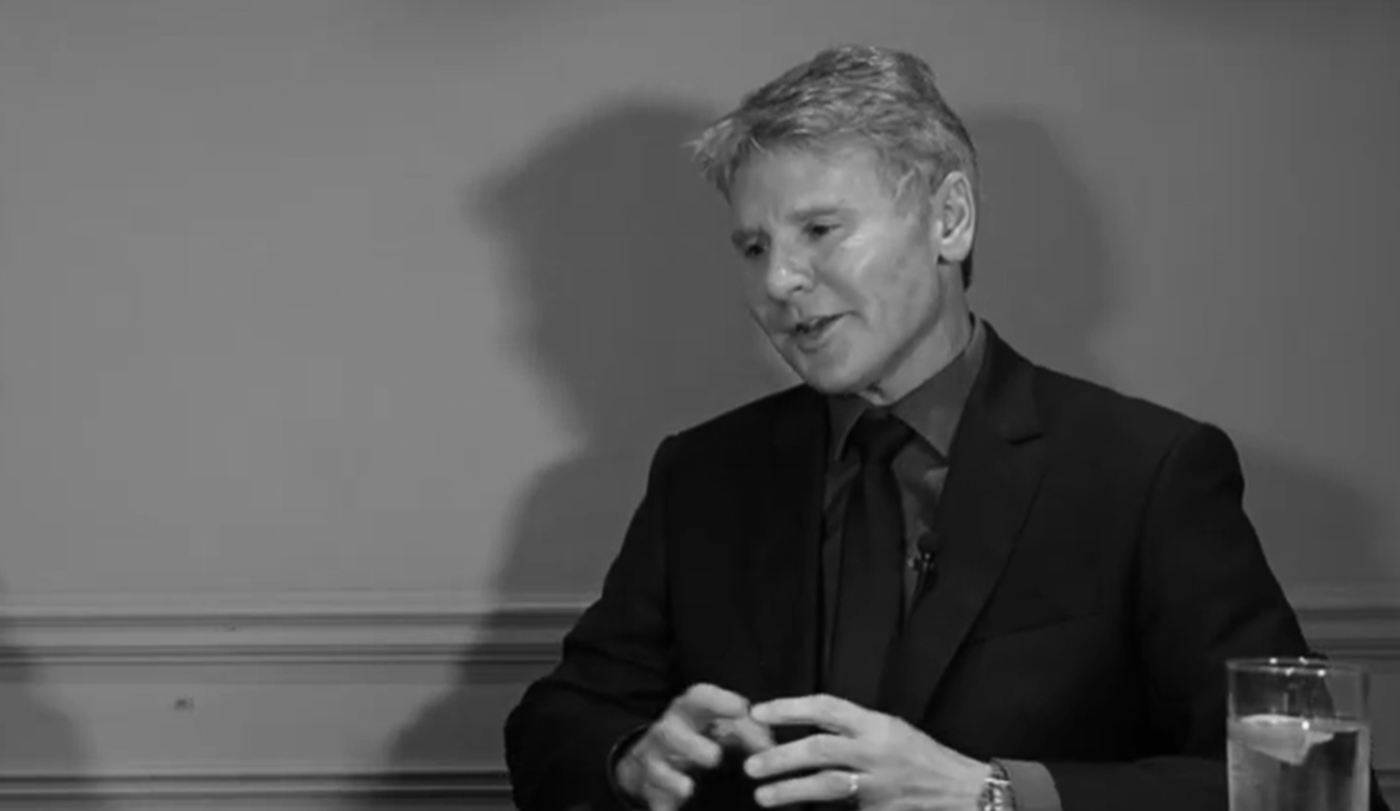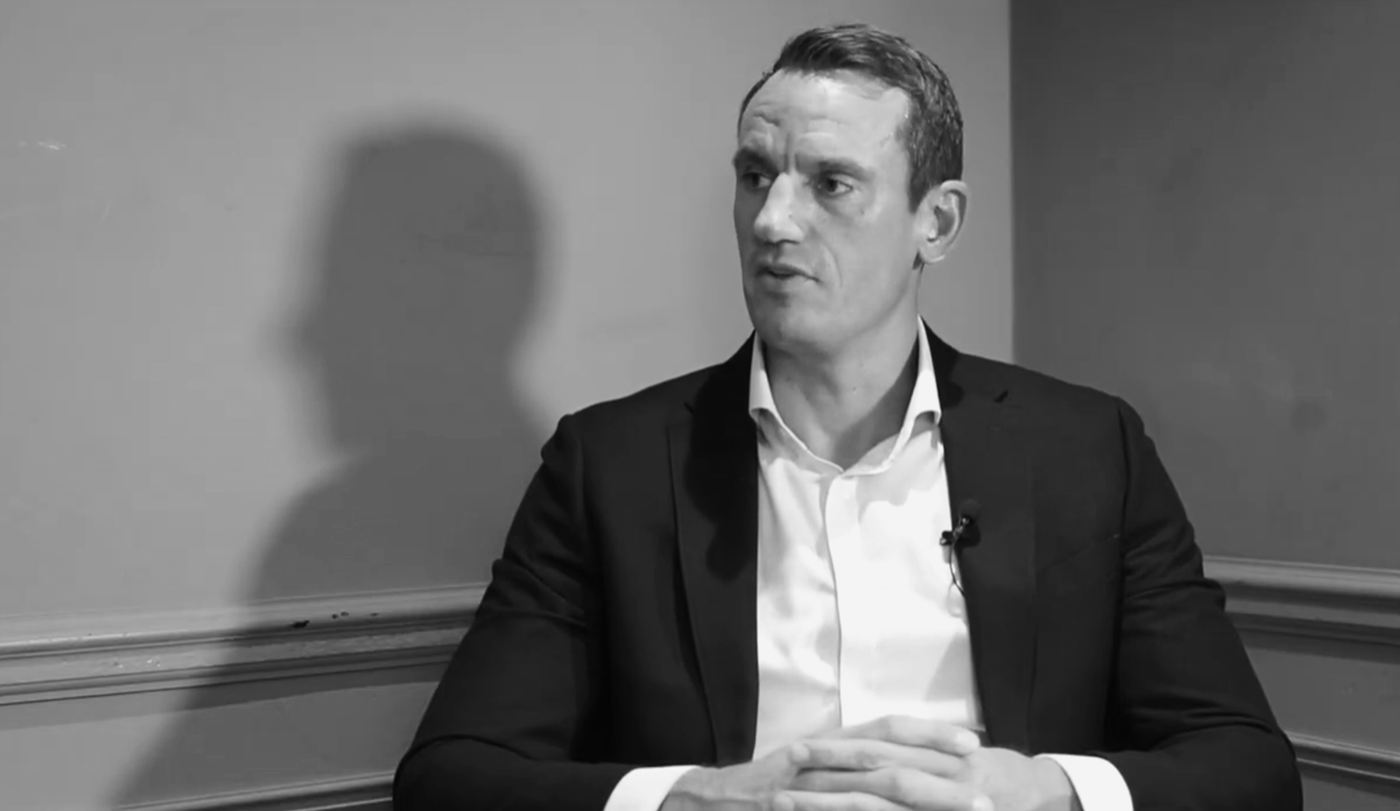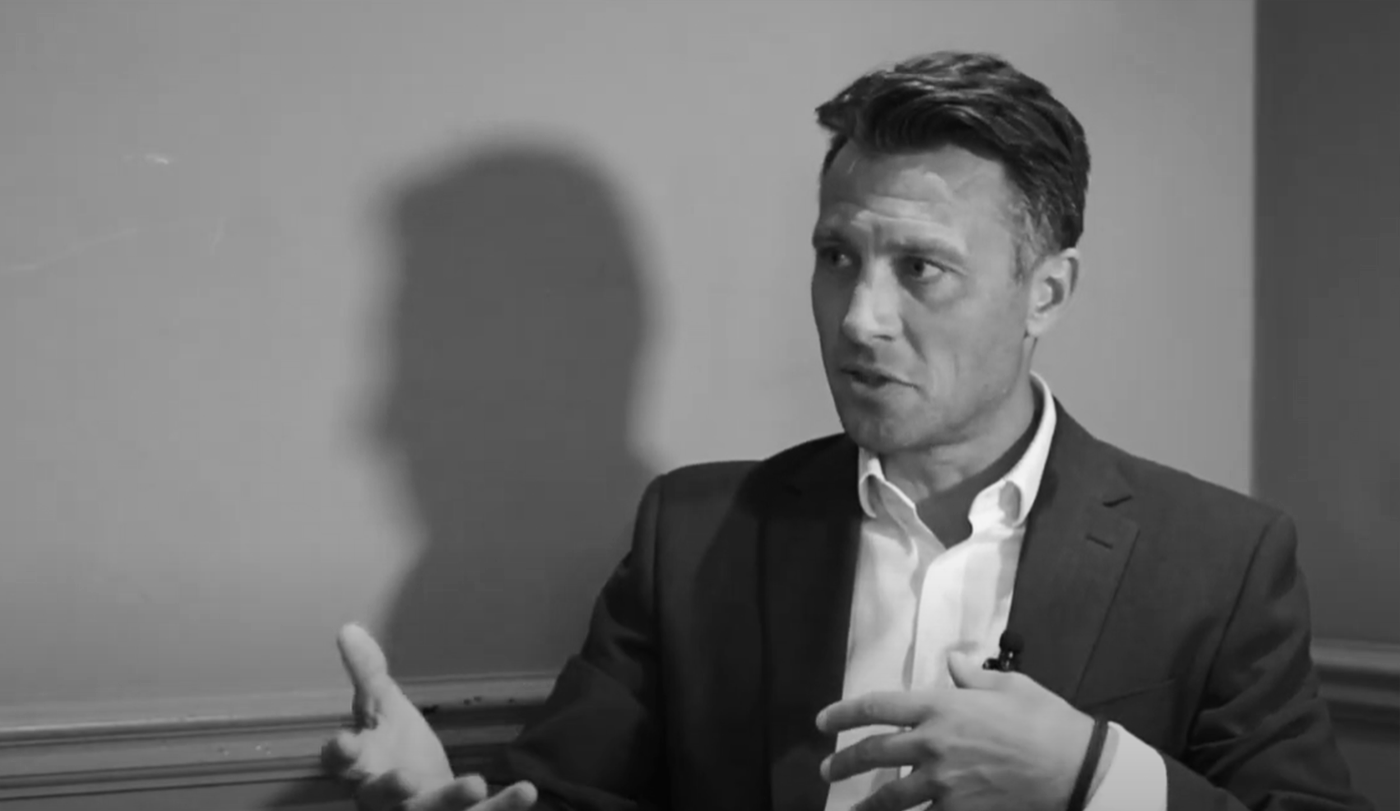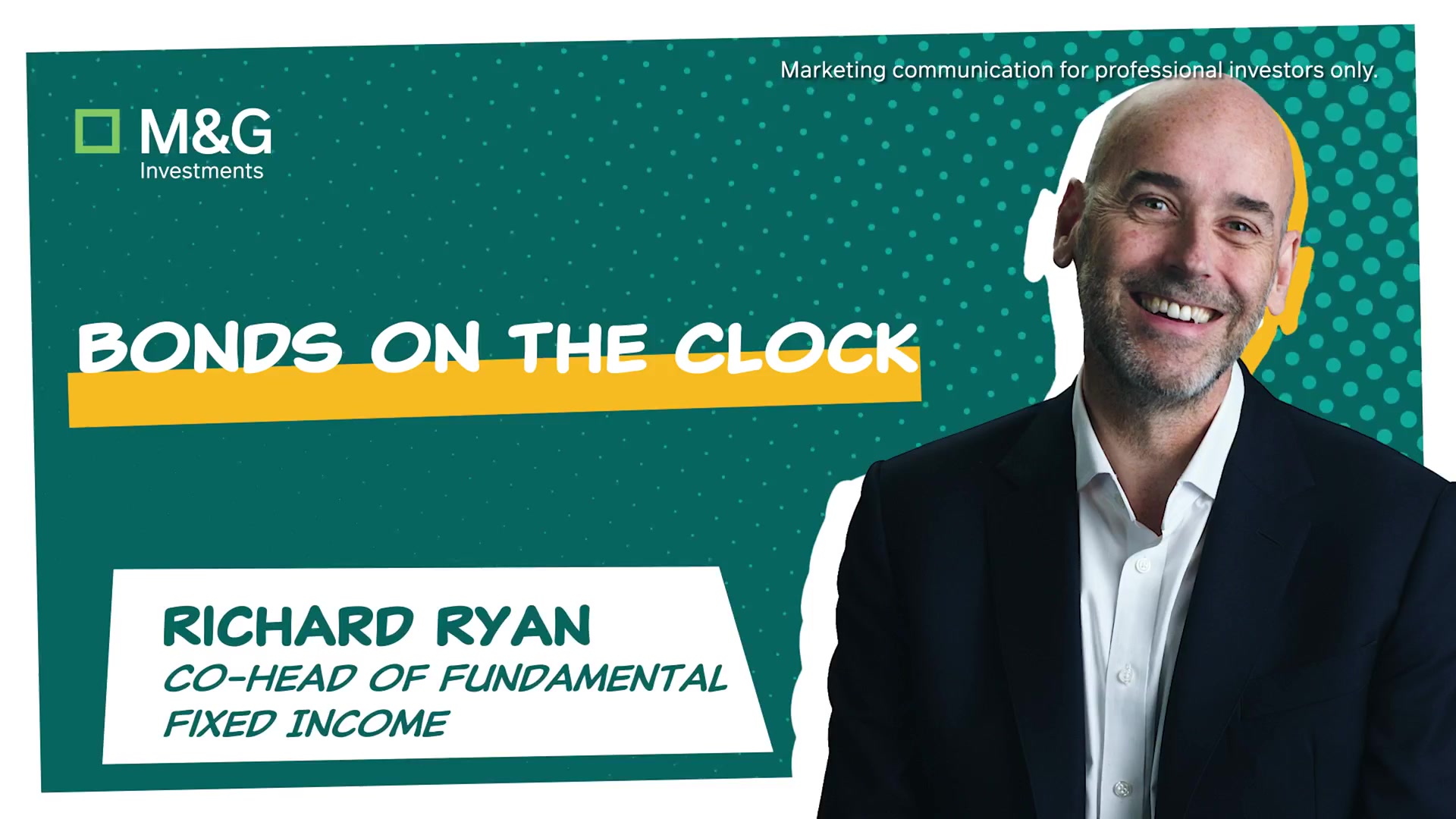On investing for the many, not the few, avoiding ‘beta repackagers’ and motivation Tough-Mudder-style
In our regular video series, we interview the wealth sector’s key decision-makers to discover how they think about life, both within the world of investment and beyond it; what brought them into the business and what keeps them here; and what makes them and their companies tick
Some fund managers offer genuine alpha, others merely “repackaged beta” – and Dean Cheeseman, managing director of client investment solutions at Mattioli Woods, has no intention of paying up for the latter.
“Our belief is that all fund managers have a persistent style bias they are trying to exploit,” he tells Wealthwise editorial director Julian Marr in our latest Choice Words episode, above. “That might be growth, that might be value, that might be quality – but, whatever their persistent style is, we are only going to pay for alpha.
“And one of the benefits of this explosion, not just of passive, but into smart beta too, is we have more and more systematically and passively constructed tools at our disposal to challenge traditional fundamental investing.
“So we will do a quantitative analysis – a decomposition of a fund manager’s return profile – to ascertain what their persistent style is and we can then check it against, Are you adding anything above the equivalent passive construct? We are really trying to get to the crux of, What are we paying for? We have a fee budget and we have a risk budget – and it is about balancing those.”
What are your fundamental beliefs? Where do you think you are going to extract additional value? How are you going to earn that extra return?”
Even if a manager has a persistent style bias, there can be extended periods when that style underperforms – so how does Cheeseman counter the risk of ‘style drift’ in the funds he buys? In reply, he references one of only two managers he has met who he believes was sufficiently “gifted to have been able to jump around that Morningstar three-by-three grid – growth to value; largecap down to smallcap”.
“We bought him for a role – US largecap growth – and he drifted and called the market beautifully towards value,” Cheeseman continues. “But I already have a value manager doing that, so he is now doubling my value bet.
“So yes, if there is a momentum trade, we might tolerate it for a short period of time but we are back to, What are your fundamental beliefs? Where do you think you are going to extract additional value? How are you going to earn that extra return? Why are you fishing somewhere else? Do you have the requisite skills to do that? Certainly style drift is an amber flag, at that point, if not a red one.”
‘Rich valuations’
Earlier in the conversation, Cheeseman characterises the current investment environment as “one of change”, adding: “It is a new era from what we have seen for much of the last 15 years or so. We have political disruption and, at the same time, we are still on this unwind of quantitative easing.
“Rates are normalised and, across the two major asset classes, we have very rich valuations with equities – particularly in the US largecap space – while fixed spreads are very tight. So what excites me is trying to understand how this plays out over the next 12 months, 36 months, five years and how to position portfolios.
“And the beauty of this industry is no two days are ever the same – it used to be you would wake up in the morning thinking, What’s China done overnight? Now you go to bed wondering what Trump has said at the last moment – and the dynamic just changes. And that then feeds into what always worries me, which is, Are we positioned correctly?
“At the moment, there are an awful lot of column inches discussing the largecap growth, AI-driven tech names in the US – and drawing parallels back to 1999/2000 and the tech bubble. And I can see some very stark parallels – but I have no idea whether we are the equivalent of ‘Q1 99’, ‘Q2 99’, ‘end of 1999’ or if we are at that ‘tipping point in early 2000’.
“I am quoting others, rather than proclaiming myself that this is a bubble – but it does look stretched. And it is only going to take one miss on earnings and the knock-on implication could be quite severe. So that keeps us awake at night – but, equally, that is what enthuses us because we have to position and be dynamic and be nimble.”
A full transcript of this episode can be found after this box while you can view the whole video by clicking on the picture above. To jump to a specific question, just click on the relevant timecode:
00.00: What excites you about the current investment outlook? What worries you?
02.54: What do you most look for in an individual investment? What constitute ‘red flags’?
04.51: How do you guard against the risk of ‘style drift’?
06.48: What drives your approach to client communications? Should professional investors aim to attract the ‘right’ type of client?
11.23: What was your path into investment – and, if you hadn’t taken it, what do you think you would be doing now?
14.07: What was the biggest investment mistake you are prepared to admit to – and what did you learn from it?
17.23: Outside of work, what is the strangest thing you have ever seen or done?
18.42: What do you see as the best and worst-case scenario for the future of UK wealth management?
20.07: What advice would you have given your younger self on your first day in this business?
21.28: Two Choice Words recommendations, please – one a book; one a free choice?
Transcript of Choice Words Episode 27:
Dean Cheeseman, with Julian Marr
JM: Well, hello and welcome to another in our series of ‘Choice Words’ videos, where we get to meet the great and the good of UK fund selection and UK fund research and find out what makes them tick. I am Julian Marr, editorial director of Wealthwise Media, and today I am delighted to be talking to Dean Cheeseman, managing director of client investment solutions at Mattioli Woods. Hello, Dean – how are you?
DC: Very well, thank you. Thank you very much indeed for the kind invitation.
JM: It is my absolute pleasure. There – I was worried I had not been very polite recently so I was really trying hard! I feel we are good now and off to a great start! First question then, what excites you about the current investment outlook? What gives you pause for thought?
DC: The current environment is one of change. It is a new era from what we have seen for much of the last 15 years or so. We have political disruption – obviously, with a new man back in the White House. Also – date-stamping this as October 2025! – France is going through yet another prime minister. But politics shouldn’t ordinarily be massively influencing markets.
At the same time, we are still on this unwind of quantitative easing. Rates are normalised. Across the two major asset classes, we have very rich valuations with equities – particularly in the US largecap space – while spreads are very tight on fixed. So what excites me is trying to understand how this plays out over the next 12 months, 36 months, five years and how to position portfolios.
And the beauty of this business is no two days are ever the same – you wake up in the morning and it used to be, Crikey, what’s China done overnight? Now you go to bed wondering what Trump has said at the last moment – and the dynamic just changes. And that then feeds into what worries me and what keeps us awake at night – and it is, Are we positioned correctly?
Because there are an awful lot of column inches at the moment, discussing the ‘Magnificent Seven’ – those US largecap growth, AI-driven tech names – and drawing parallels back to 1999/2000 and the tech bubble. And I can see some very stark parallels – but I have no idea whether we are the equivalent of ‘Q1 99’, ‘Q2 99’, ‘end of 1999’ or if we are at that ‘tipping point in early 2000’.
I am quoting others, rather than proclaiming myself that this is a bubble – but it does look stretched. And it is only going to take one miss on earnings and the knock-on implication could be quite severe. So that keeps us awake – but, equally, that is what enthuses us because we have to position and be dynamic and be nimble.
Only pay for alpha
JM: Very good – great start. Let’s narrow in then on individual investments. What do you most look for? What do you see as red flags?
DC: On a manager-selection piece, we look for genuine alpha – and, of course, everybody’s looking for some degree of genuine alpha. If we look at it in an equity context, we are trying to identify that persistent style the fund manager is trying to exploit and how they are going to outperform. And our belief is fund managers have a persistent style bias – they might be growth, they might be value, they might be quality. But, whatever their persistent style is, we are only going to pay for alpha.
And one of the benefits of this explosion, not just of passive, but into smart beta, is we have more and more systematically constructed, passively constructed tools at our disposal to challenge traditional fundamental investing. So we will do a quantitative analysis – a decomposition of a fund manager’s return profile – to ascertain what their persistent style is and we can then check it against, Are you adding anything above the equivalent passive construct? And we will pay for alpha – but I’m not paying for repackaged beta.
So, by return, what are the red flags? It’s a ‘beta repackager’. It’s just a fund manager who will be positioned in value, say, but isn’t adding anything over and above what I can capture, either systematically or passively. So we are really trying to get to the crux of, What are we paying for? We have a fee budget, we have a risk budget – and it’s balancing those. In that context, we want to reward genuine alpha, for which we will pay – but, if we can capture it systematically more easily, that is a red flag.
Style drift as an amber flag
JM: You mentioned style there – and I was wanting to talk about ‘style drift’. Clearly, there are times when it’s easy to be following a particular style and, as we have seen over the last 10 or 15 years, there are times when it is very difficult. So how do you deal – perhaps personally, perhaps keeping others on track – with the dangers of style drift’?
DC: Again, we prefer purity. It is back to this fundamental belief that a fund manager has a persistent style. If you think of life in that Morningstar three-by-three grid – growth to value; largecap down to smallcap – a fund manager might be largecap, growth-oriented. He might drift at times towards blend or come down and be a little bit anti-megacap or towards a bit more midcap – but, in 30 years, I have only found two fund managers who are sufficiently ‘schizophrenic’, as it were, to have jumped around that Morningstar three-by-three.
So, with the understanding that a fund manager has this persistency of style, we don’t really tolerate style drift. We did own one of these very gifted, if you like, fund managers who did move around and we bought him for a role – US largecap growth – and he drifted and called the market beautifully towards value. But I already have a value manager doing that, so he’s now doubling my value bet.
So yes, if there is a momentum trade, we might tolerate it for a short period of time but, ordinarily, style drift is certainly an ‘amber flag’. And we are back to, What are your fundamental beliefs? Where do you think you are going to extract additional value? How are you going to earn that extra return? Why are you fishing somewhere else? Do you have the requisite skills in order to do that? Certainly it is an amber flag, at that point, if not a red one.
Think about today’s client – and tomorrow’s
JM: Then, of course, in doing all this, you have to communicate with clients. What is the Mattioli Woods approach to client communications? And, as a sub-question, I would like to talk about the ‘right’ type of client. What I mean by that is somebody who is going to stick with you through the whole investment journey so they do not miss out on anything at the beginning or the end that might have boosted their returns.
DC: I think we do something slightly differently. We do make the usual communications to clients – so we’ll do client webinars, we’ll do client presentations and we provide written market commentaries in relation to how their portfolios have performed. And everybody’s doing something similar – but we are exploring increasingly different mediums.
And this feeds in, I think, in terms of defining ‘the right client’ – although Mattioli Woods’s client base is probably slightly more diversified than many of our peers. So you have had the advantages of auto-enrolment – and clients who would fall into maybe the ‘mass affluent’ but fall outside of many wealth managers’ typical fishing grounds have now gently accumulated quite material pockets of investable assets.
And we are working very hard across the spectrum of the opportunity set of clients – not just focusing on ultra-high net worth or high net worth, but trying to sell our services into a much broader subset and provide those services as part of their financial planning. And then the communication is absolutely vital – because these people may not have had the traditional experiences of investment before.
So there is a lot more hand-holding and a lot more explanation – it is a gentler communication. But what we also do better – I won’t say our peers don’t do it, but I think we do it better than the majority – is we don’t just look at the client of today. Clients sadly pass so there is a tremendous effort at Mattioli Woods to communicate to the family and the beneficiaries of the client today, who could be clients tomorrow – because when today’s client sadly passes, we want to be able to continue to work with that family for generations to come.
And where we are also working slightly differently to many of our peers is – it has been maybe a throwaway, sort of stereotypical response – but the adviser comes in and talks to the male. He might have been the primary earner and the relationship is with the male. Well, sadly, in this day and age, we are seeing – once kids have left university – families that were held together for the sake of the kids.
So we are seeing more and more divorces and one of the largest, growing components of the client base – generally, not just at Mattioli Woods – is the 50 or 60-something female. But, if you have never communicated to the family, then you have no relationship. So, again, we try – we are obviously not encouraging divorce! – but we are trying to make sure we treat the ‘unit’ as a single entity and speak to all components within it.
And then what is really important – because, when we are talking about future generations and about both the husband and the wife – the risk profiles will naturally be different but the investment preferences will be different too. So we have got to be able to communicate and satisfy their beliefs and objectives – it is a far broader spectrum.
So the communication piece is absolutely central – not just around what we are doing in the portfolio and what we think about markets now, but how we subdivide that across the different component parts.
JM: Very interesting. And there is no need to be ashamed about, you know, self-interest leading to excellent service! We thought about that as a Wealthwise strapline for a while – maybe!
Lightbulb moments
JM: Good answer to the comms question. A more personal one, now – what was your route into investment? And if you had not taken that path, what do you think you would be doing now?
DC: My route into investment … I didn’t actually apply to university. I had been to a rural East Anglian secondary school. Many of my fellow students were farmers, who went off to agricultural college with a view to then joining the family farm. But there was no clear path on my side.
I went into accountancy – only because it was a broad footing. And that was fine, until I then hit tax and audit in my second year and I decided I was never going to become an accountant! But having had a taste of various modules at college, I then did apply for a degree. I did a broad-brush financial services degree, which exposed me to different aspects of financial services, away from tax and audit.
And it put me into investment – or it gave me exposure to investment – and from there, because I had the opportunity to write my dissertation on appraising investment portfolios, using investment trusts as my data-set – that was my leapfrog-in as an analyst and I haven’t really looked back. I have been analysing some sort of collectives ever since for 30-odd years.
What would I be doing instead, if I hadn’t fallen into that path? I think it would be teaching – and I think that is quite vocational. My mother was a teacher. Her mother was a teacher. I have loved, as my kids have grown up, coaching athletics and rugby, imparting that knowledge.
Coaching athletics in southwest London on a Sunday morning to an incredible breadth of young aspiring athletes – some struggling to put one foot in front of the other, struggling to even pick up a shotput or with their coordination; trying to get the message across as to how they can improve; and then seeing the lightbulb go on when they get it. So I think, if I hadn’t gone into investment, there would have been a calling somewhere in teaching.
The beauty of Mattioli Woods as well is we are HQed in Leicester, we have a very close relationship with De Montfort University and I am now privileged to have the opportunity to work with their finance faculty. And I give the occasional guest lecture and bore the students on portfolio construction or risk management. And I do enjoy that – that I do get a buzz out of.
JM: Very interesting. And there have plenty of Sunday mornings when I have struggled to put one foot in front of the other – so I will give you are call next time!
‘Equity on steroids’
JM: What is the biggest investment mistake you are prepared to admit to? And, as a positive twist – or a learning twist – what did you learn from it?
DC: I have already made reference to this but I have had exposure – initially academically, then practically – to investment trusts for over 30 years. They are a brilliant vehicle in that they ringfence the underlying asset and, irrespective of the flow of the market at that time, you can have a less liquid underlying asset class – so infrastructure, renewables, whatever it might be – and the fund manager, depending on liquidity, isn’t being forced to try and buy more stock or get rid of it.
And that is a huge advantage in non-institutional portfolios, which is obviously what the wealth community is constructing for private clients. But the problem is, you use it for diversification – and we touched earlier on how rich some of the equity valuations are and how tight some of the credit spreads are. We are all looking for that diversifying asset for when the market rolls.
But the problem with investment trusts – and where I’ve used them in the past and I’ve come unstuck – is that you put them in for the benefits of diversification, because it should dance to a different return profile or a different income stream, but just when you want it to behave as an infrastructure, for example, it remembers it’s got an equity wrapper around it, and it behaves like equity. And the illiquidity of it seems to exaggerate the downside, so you end up with sort of an equity on steroids.
Now, at Mattioli Woods, we are growing as a wealth manager – we have £25bn assets under management – but we are already now too big, really, to use closed-ended for their liquidity profile. But I think, if you have the right time horizon, closed-ended are brilliant – the opportunity to access these niche, sub-asset, diversifying asset classes – but you have to have the time horizon, the luxury to look through that market volatility, when it will behave like an equity. And, in the portfolios we are constructing, we are not afforded that timeline.
JM: That is an interesting, if slightly depressing, answer – the idea that investment trusts as a sector could have a ‘sell-by date’ coming up at some point. That felt like a small future obituary for them.
DC: I will be interested in what LTAF does and whether that is the bridge or halfway house. I am a massive advocate for closed-ended but the size we are and the way they respond to the markets and the fact that we are reporting performance monthly or quarterly – we are not afforded the luxury of saying, Don’t worry now – it’s fine. This will bounce back.
JM: I will have to get Cherry Reynard – recently judged AIC freelance journalist of the year for the 93rd time in a row – on the case on! She will be in touch!

Tiger mudder?
JM: Now, outside of work, what is the strangest thing you have ever seen or done?
DC: Outside of work, I think the strangest thing I have seen – in a previous life, before my hip went, before I had the replacement and went ‘bionic’, I would occasionally do these sort of Tough Mudder assault courses.
And the most ridiculous thing I have seen is a sea of people wading, waist-deep in mud, squealing while they have been gently electrocuted – having chosen to be there in the first place. So I look back on that and just wonder, Dean, what the hell were you doing? And I am sure one or two other participants were also. But it is a very bizarre thing to find yourself on a Sunday morning – waist-deep in mud, electrocuting yourself!
JM: I sometimes feel, as I listen back to these interviews, that I do not ask all the follow-up questions I should! The electrocution – is that an official part of the Tough-Muddering or was it just a by-product of some nearby electric fence trailing into the mud?
DC: No, they very kindly put additional obstacles onto obstacles – just to encourage you to move through quickly. I think it’s meant to be motivational!
JM: Well, we now have a short-list candidate for the ‘Strangers thing’ question!
The many, not the few
JM: Back in the ‘sane’ world, what do you see as the best and worst-case scenarios for the future of UK wealth and wealth management?
DC: I think UK wealth is changing dramatically. We are seeing tremendous consolidation. We have seen acquisitions, takeovers, private equity – Mattioli Woods included – come through. A lot of that is for the greater good. It brings in scale and it brings in cost savings, which can be passed on to the end-client. We can build solutions and deliver outcomes in a far more cost-effective manner – delivering on value for money.
The challenge within that is we need to make sure we take all the clients with us and that there isn’t just a focus on ultra-high net worth and high net worth – that we are capturing the broad spectrum of people out there who do need financial planning, do need that guidance.
And private equity have got their own motives – let’s not be shy about why they’re getting involved – but, in this rush to consolidate, let’s make sure it is being done for the right outcomes for the client, and that we are delivering to the breadth of the opportunity set and not just focusing on the few. I think that is the biggest challenge as we are seeing this corporate change at the moment.
Not ‘a game of perfect’
JM: Home straight, now. Two more questions – the first of which is, What advice would you have given yourself on your first day in the job?
DC: So, with the benefit of hindsight, what would I have shared with myself? Investment doesn’t deliver perfect outcomes continuously. We assimilate the information – whether it is macro, bottom-up, portfolio construction, risk – and we construct solutions for clients in order to meet their desired outcomes. But we only do it with the best information we have available at the time.
So what I would have told myself is, It is not ‘a game of perfect’, that there are variables outside our control and that we just need to get more right than we get wrong – it is unrealistic to expect a perfect hit rate. And the very sports-focused, highly competitive individual, who would have walked into that environment back in the day, would have been striving for an expectation of constant wins.
But it is a case of, OK, there are different ways to win in this game – let’s make sure that we put the client first, that we deliver the right outcome and that we manage potential losses and the downside. You are not going to get it all right, all the time.
Born to run
JM: Good answer. Last question – we call this ‘Choice Words’ because of what you do professionally, making professional choices, but now we are going to ask for a couple of personal tips or recommendations. One would be for a book – it does not have to be investment-related – and one is a completely free hit of any advice you think our beloved audience of one would benefit from!
DC: The book – I’ve just finished this. It’s relatively hot off the press. It’s called Rain and it’s by Barney Campbell. I won’t spoil the punchline but I would urge your viewers to check this out. It is the story of a young aspiring officer going through Sandhurst, being appointed into his regiment and, ultimately, finding himself on the front line in Afghanistan.
And it is already regarded – despite only being out for a relatively short period of time – as one of the pre-eminent biographies or articulations of what it is that our incredible servicemen are putting themselves through, almost day in day out, when they find themselves on the front line. It is exhilarating. It is utterly emotional.
It’s a roller coaster and it’s a real eye-opener for those of us who drive a desk and have never put ourselves in harm’s way in that regard. And it is a tough read for a parent who has a daughter currently going through the selection process to get into Sandhurst. It’s not easy reading – but I would urge anybody who has any warmth towards our armed services to read it. It is utterly incredible.
And in terms of ‘wise words’, I’m going to try not to butcher this one. So this was carved on a stone behind the reception desk of a client in Aberdeen, when I was stood waiting for a meeting – and it really resonated.
So, trying not to butcher it, it was: ‘Every morning in Africa, a gazelle wakes up, knowing it must outrun the fastest lion or it will be eaten. Every morning in Africa, a lion wakes up, knowing it must run faster than the slowest gazelle or it will starve. Now, it doesn’t matter whether you are a lion or a gazelle – when the sun comes up, you’d better be running.”
And that resonates with me in a number of ways. One, each day is a new chapter – we have a blank sheet. Yes, we’ve learned from the past – so it’s learning from yesterday’s messages and takeaways and how do we improve? So it’s about constantly striving to improve – ultimately to deliver better outcomes for clients. It is about the growth and the wisdom and having that growth mindset – but it’s also about being proactive and having that energy, that we’ve just got to crack on. Get on with it.
JM: Wow! Very interesting Choice Words recommendations. Thank you for those and thank you for some other great answers – and all carried out in the midst of just the four fake fire alarms through all this, which we will have edited out for the benefit of our viewer! Because that was a shock to me – total professionalism from you. Dean Cheeseman, thank you so much for talking to us today.
DC: My pleasure. Thank you very much indeed.
JM: And thank you very much for watching. Please look out for further Choice Words videos as they are published.









